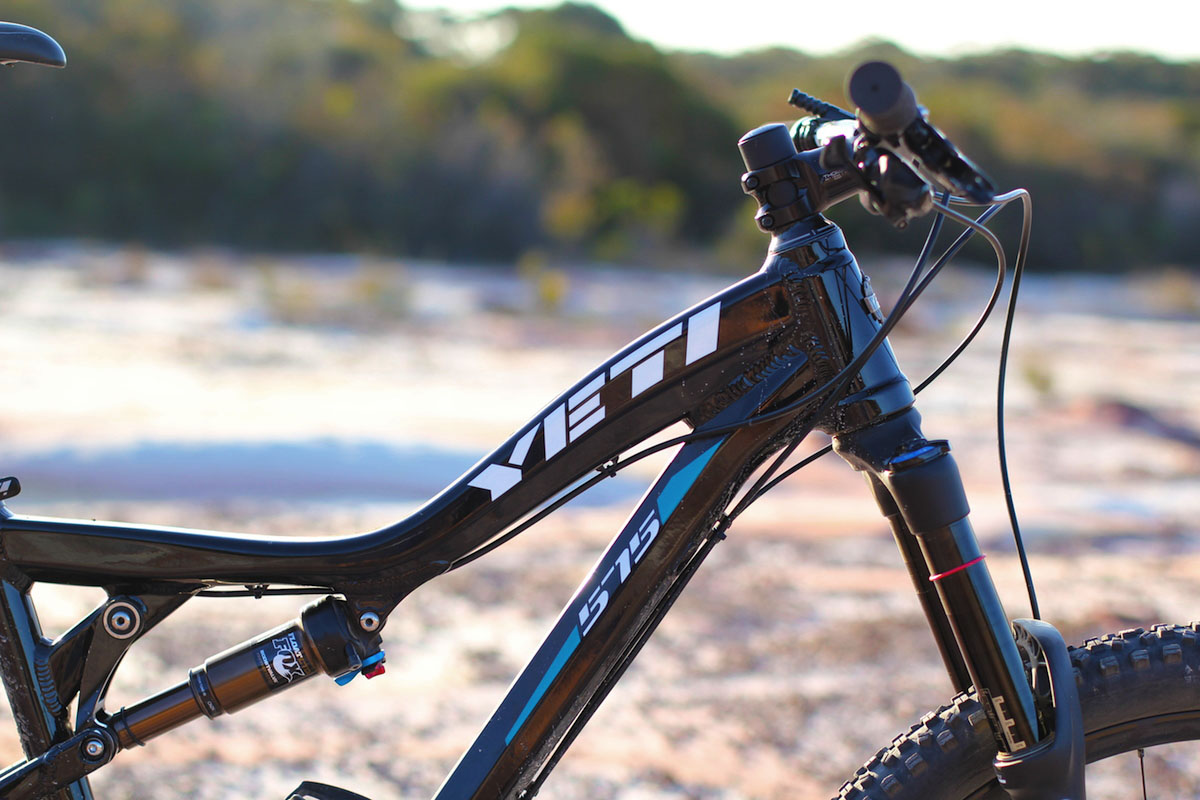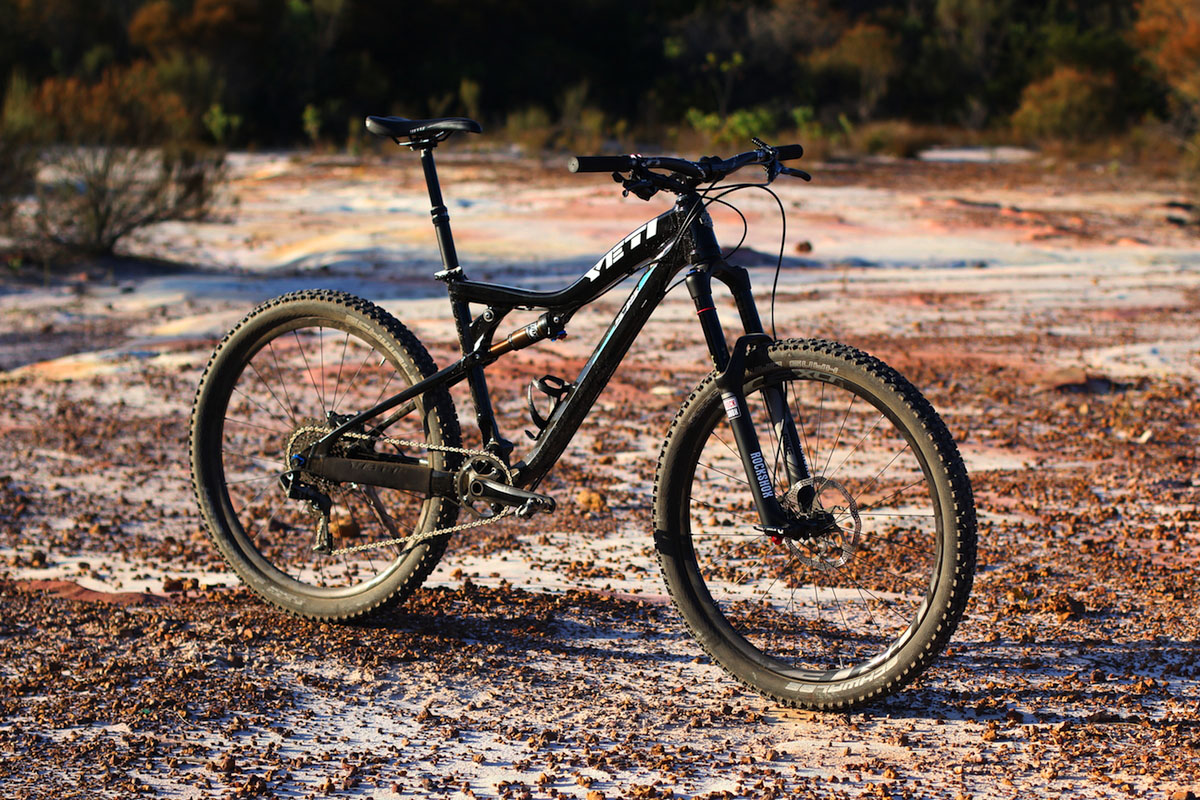When Yeti’s 575 disappeared from the Colorado-based brand’s range a couple of year ago, the crew here at Flow were devastated. We rank it right up there with the disappearance of Scribbler ice blocks in the disappointment stakes. But then, like a leader in exile, the 575 made a glorious return, and while it was away it underwent a fantastic transformation.
The 2014 575 is proof that a classic bike can be modernised, without damaging its original appeal – something that few remakes ever achieve (VW Beetle, we’re looking at you).
[divider]Build[/divider]
The 575 retains its unmistakable profile and simple, effective suspension configuration, but the ‘old-school’ 26” wheels have been upsized to 27.5”, the spring curve has been changed to provide more mid-stroke support, the formerly carbon seat stays are now alloy, and there’s internal dropper post routing amongst a host of other tweaks.
With the move to 27.5” wheels, the geometry was also brought in for a nip and tuck too; Yeti slackened the head angle (now 67 degrees) and slightly lengthened the front-centre measurement too, in line with the trend towards long top-tubes / short stems. But the overall fit and feel of the 575 hasn’t changed one bit – think your favourite track suit pants; instantly comfortable. It has a relaxed, slightly upright position that is best suited to big days in the saddle and which takes absolutely no effort to get used to.
Compared to the new-wave suspension designs that abound on the most modern Yetis (check out the new Infinity design here), the single pivot 575 is like a blast from the past. The seat stay drives a swing link, which deliver 5.75” /146mm travel from a FOX CTD damper. It’s a reliable, proven design. While there are some drawbacks to this simple system, it has the benefits of being easy to understand and maintain, it’s relatively lightweight, is cost effective to produce and works bloody well in most trail situations. Sometimes, with so much development emphasis and marketing directed at suspension configurations, it’s nice to ride a bike that reminds us there’s more to a good bike than a fancy wheel path.
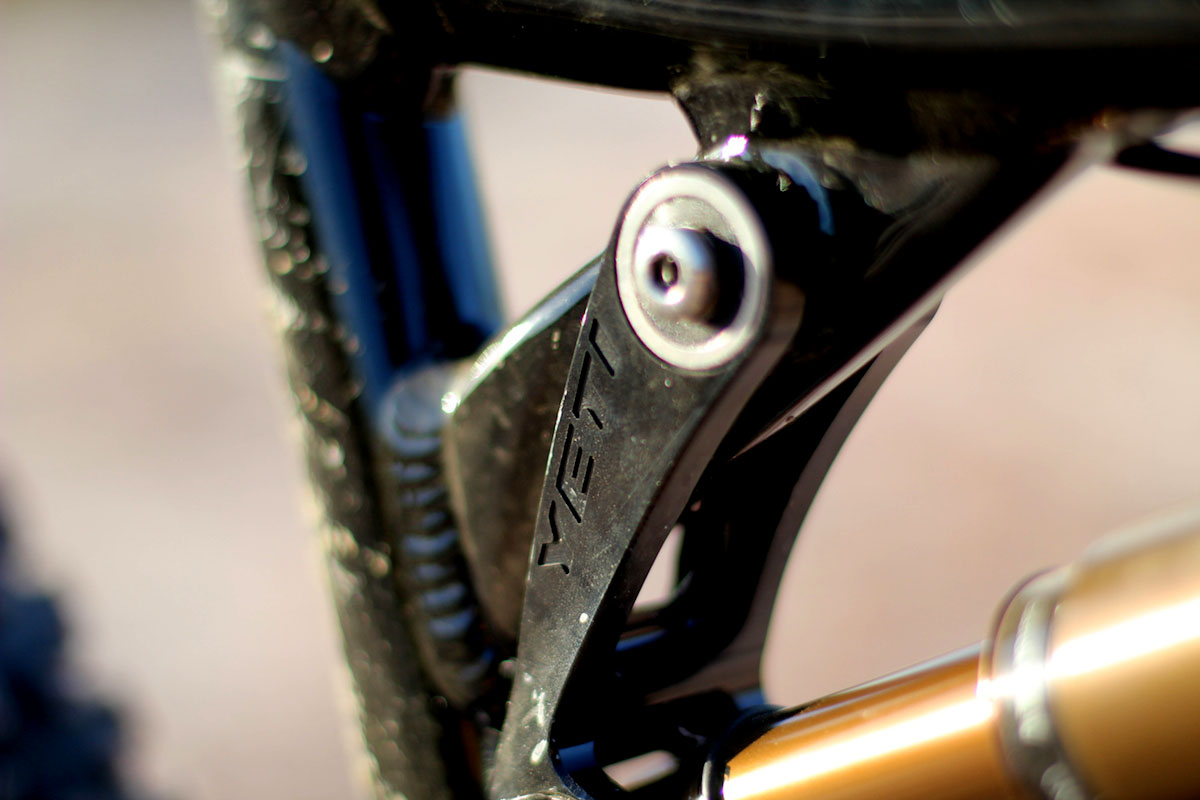
As we’ve always found with the 575, the sizing runs a little tall, with a long seat tube and fairly high handlebar position relative to the reach. For shorter riders, (especially with a 150mm fork fitted) the bar position may be a bit high, so switching to a headset with a lower stack height or running a negative rise stem might be the trick.
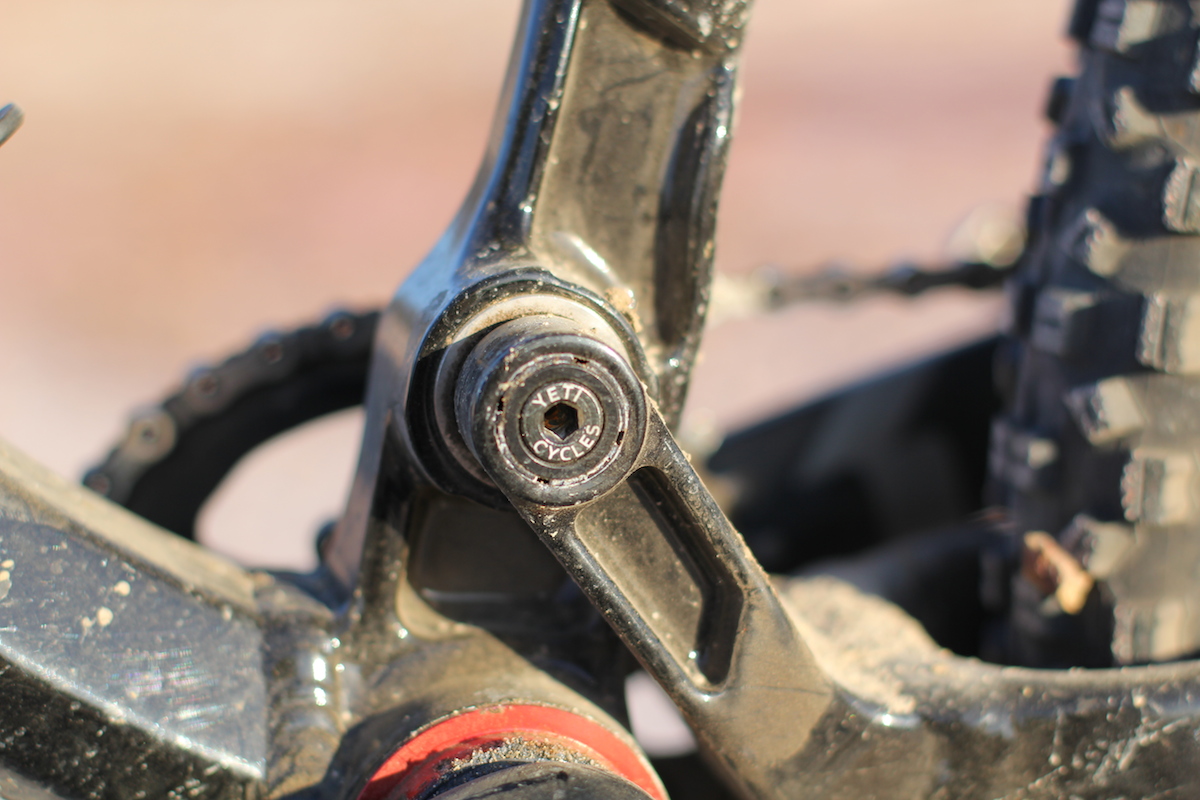
As a bike that instantly appeals to the traditionalists, it’s nice to see that the 575 still fits a water bottle within the mainframe, a feature that is missing from the new crop of Yetis. Tyre clearance is a little tight but up to a 2.35” should clear with minimal rub in the corners. We were running the massive Schwalbe Hans Dampf on the rear and we did notice a bit of scuffing where the tyres had rubbed on the seat stays.
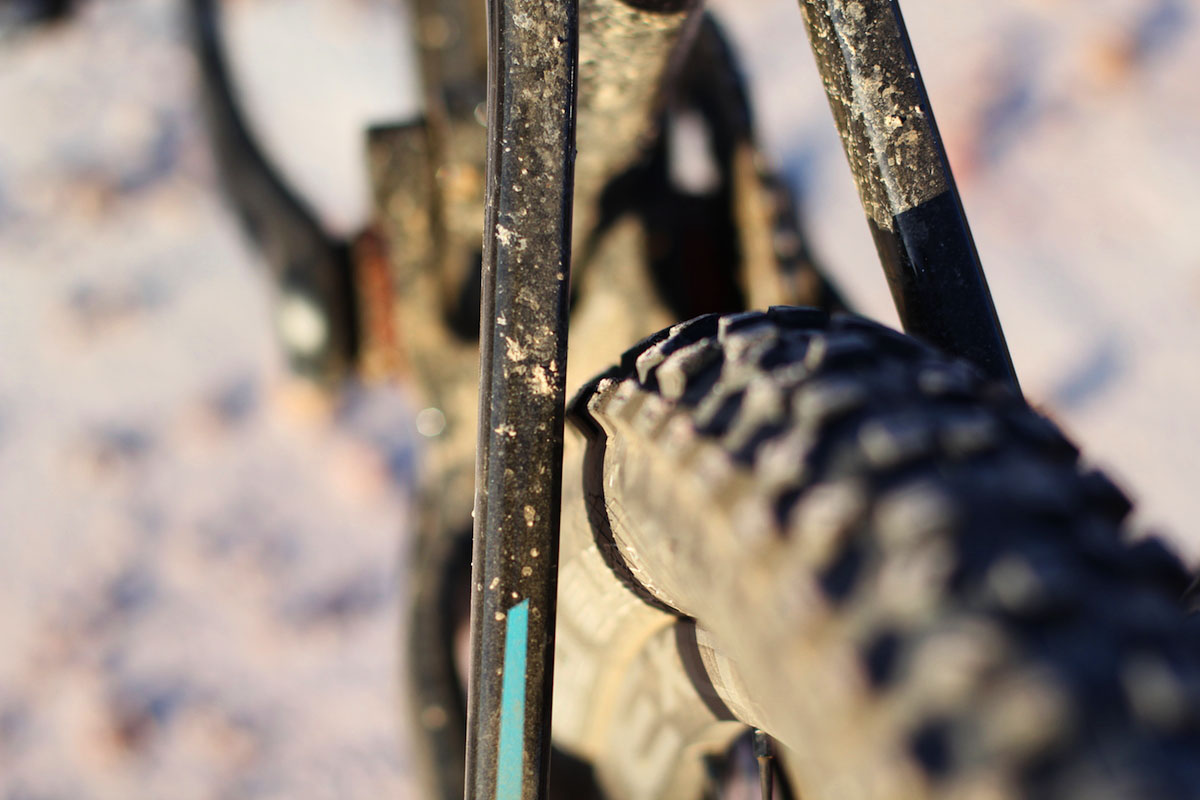
[divider] Spec[/divider]
For a classic bike, our build kit was anything but, with a suite of sweet all-mountain components. 2014 will be remembered as the year that SRAM dominatde the all-mountain / Enduro segment, and the 575 gets a Reverb post, X01 drivetrain and superb Rockshox Pike fork, along with a set of Elixir brakes. We opted to encase the Easton wheels with meaty Schwalbe rubber, which may have done us no favours in terms of rolling speed but gave the 575 cornering and braking traction like a cat on a billiard table.
As befits such a nice bike, the cockpit gets a Thompson stem and carbon Easton bar. We’d prefer to see a headset with a lower stack height, just to give riders the option of getting lower up front.
The 575 is available with a range of different build kits, none of which we’d call low-end, so you can really make this bike as light and Gucci as your wallet will allow. Our bike clocked in at $5600 and 12.62kg.
[divider]Ride[/divider]
Having spent a lot of time on previous versions of this bike, getting back onto the 575 was kind of like dropping by to visit grandma’s house…after she’d died and someone else has moved in. It smells the same, but the taffeta curtains are gone and there’s now a modern flat screen TV.
It’s a seriously familiar feeling bike; the top tube length isn’t rangy like many new all-mountain bikes, there aren’t any funky on-the-fly shock adjusters on the bars, you’ve got a spot for your water bottle. It’s just so easy to get along with!
Getting the suspension balance right with the 575 has been a bit of challenge in years past; the suspension design tended to blow though the middle portion of the travel quite easily. For 2014, Yeti really focused on creating a more progressive ride, and for the most part they’ve succeeded, with the bike sitting higher in the suspension stroke and not bottoming out as readily. We did still ultimately end up running a tad less sag than usual (more like 20% than the usual 25%) in order to get the front and rear suspension to work as a team. Taking the time to get it right makes all the difference.
Putting a Pike on the front of a bike is like having four or five beers before you hit the disco – it imbues you with so much confidence you’d swear you were the best rider/dancer in existence. With a slacker head angle than previous versions, the monstrous contact patch of the Schwalbe front tyre AND the Pike, the 575 is now far more adept at running things over than in the past. The improved front/rear balance helps keep the bike on a more even keel too, when you get in too deep, the bike doesn’t find itself all bottomed-out and out of shape.
Unlike more modern suspension designs, the 575 doesn’t exactly rocket forward when you mash the pedals. Out of the saddle sprints can set the rear suspension bobbing unless you rely on the shock’s CTD lever to keep the monkey motion to a minimum. We were disinclined to use the Trail mode on the rear shock in most cases, finding it a bit firm, especially as the fork is so freakishly plush. It’s not really a ‘sprinty’ kind of bike, favouring a more consistent kind of pedalling. Spin and win.
For an alloy bike, the 575 is remarkably quiet. Partly this is due to the stable X01 drivetrain, but the clean, rattle-free cable routing plays a roll, as does the bike’s overall suspension smoothness. When it comes to eagerly slurping up the bumps, the effectiveness of the 575 does make you wonder how some more complicated designs really stack up in the complication/effectiveness ledger.
[divider]Overall[/divider]
With its full alloy construction, the 575 makes it more affordable than ever to own a Yeti full suspension bike – still, we’d shudder to use the term ‘price point’ with reference to this great machine. The 575 proves to us that a classic can be reinvented, reformed and evolved without losing any of its original vibe. The fact that this bike continues to be real performer does also subtly call into question how much development is actually genuine progress, versus mere sideways stepping. As a long-legged trail bike, or a mellow all-mountain steed, the 575 is still as relevant, capable and desirable as ever.

